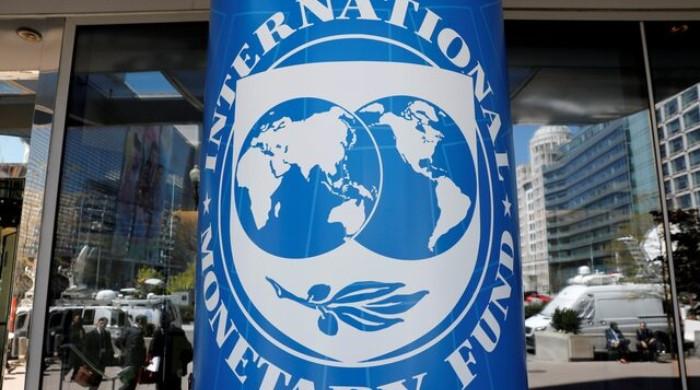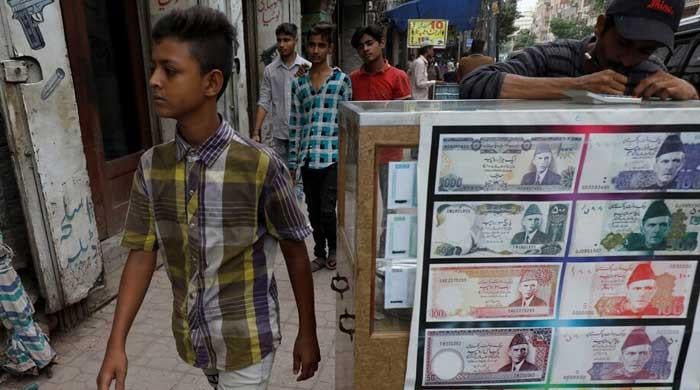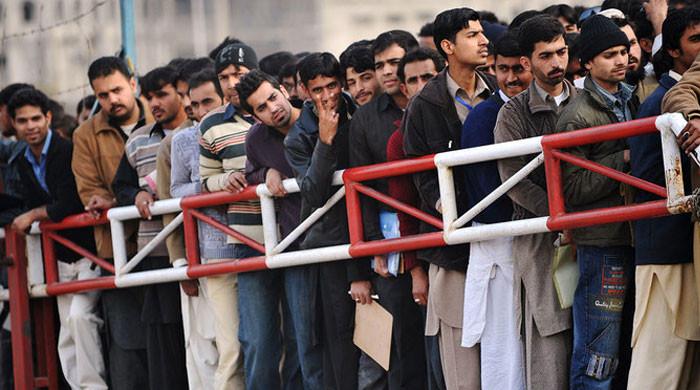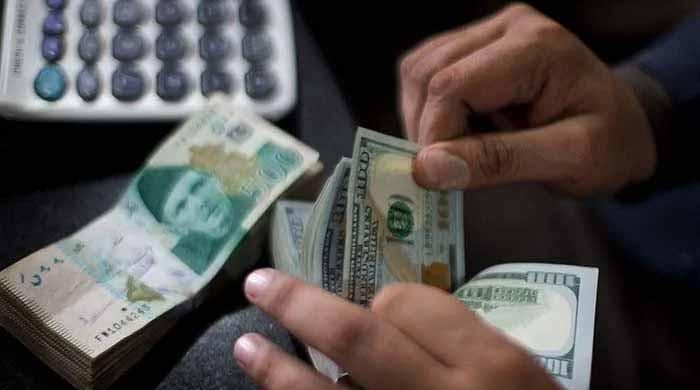What does a protest cost?
While Centre wants to curb right of assembly in public interest, Punjab supports it; fear is that right to protest may be subjected to prior official permission
November 14, 2022
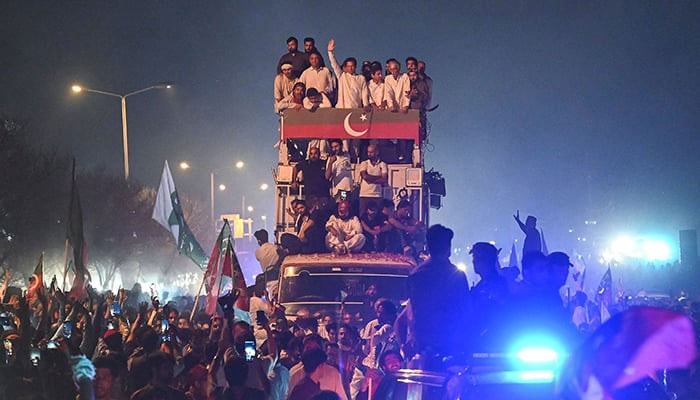
Never has the constitutional right of assembly ever been put to the test till now. This has now changed. While the federal government wants to curb this right in the public interest, the Punjab government supports it. The fear is that the right to protest in Islamabad may be subjected to prior official permission.
A district administration can easily manage long marches or an assembly of people, but in the case of Islamabad, the highest and all-powerful constitutional bodies like the federal cabinet, Supreme Court, and high court are also involved in allowing or banning the activity.
And instead of getting guidance from the local district administration or traffic police, the citizens of the twin cities of Islamabad and Rawalpindi tend to interpret off-screen arguments among contesting powers before sending their children to school or going to work. In this process, they also try to decode the body language of the personnel of law-enforcement agencies to see how they are going to deal with aggressive protesters.
In Pakistan, the right to assembly is also interpreted as the right to protest. There are no conditions on the freedom of assembly except that it has to be within the legal parameters and should be undertaken without violating any laws.
However, different court rulings have held that the right to protest is not absolute, and peaceful protesters cannot infringe on the fundamental rights of other citizens. Public functionaries thus have to ensure that the constitutionally guaranteed rights of every citizen are protected.
Maintaining public order is a crucial responsibility of the state and its functionaries, but preventing a protest from turning violent remains a challenge for them.
Limitations on the right to assembly are enforced by a duty magistrate who can employ remedial measures if they consider that the protest may pose danger to human life, health, or safety, disturb public tranquillity, or turn violent.
As per the law, only a government functionary can initiate legal proceedings against violators.
At present, people in Islamabad are surrounded by unending uncertainty; they are not sure whether the recently resumed long march will lead to a dharna (sit-in).
Protests in Islamabad are unique as people from other cities meet in the capital to hold demonstrations; there is limited to no participation by the locals.
To counter the PTI long march, the federal cabinet approved a Rs410 million supplementary grant for the Ministry of Interior in October. This was in addition to the more than Rs200 million already allocated in the annual budget for similar purposes.
Among the 33 ministries and divisions of the federal government, the interior division is the largest administrative unit. It has 237,821 civil armed forces (CAF), which comes out to be 42% of the actual working strength of 565,082.
Rumours have it that PTI workers will come for a prolonged protest, equipped with gas masks, bed sheets, blankets, towels, additional clothing, small-size tents, sling-shots, marbles, and batons. It seems the protesters are set to fight law-enforcement personnel.
To deal with any untoward situations, the government has deployed at least 13,086 personnel — 4,199 Islamabad police officials, 1,022 Sindh police officers, 4,265 FC personnel, and 3,600 Rangers — in different areas of the capital.
The law-enforcement agencies have been provided with 567 teargas guns with 50,050 teargas shells, 500 12-bore guns with 37,300 rounds, 2,430 masks, 335 vehicles, 17 paper ball guns, 11,000 paper balls, 10,500 spray paint, and 26 megaphones to counter any violation made by troublemakers.
A big portion of this law-and-order maintenance is running costs. For example, food charges for 15,000 officials of the capital and other district police for five days is over 41 million. The per-day rent cost of one container is Rs25,000. There are reportedly 380 containers around the city. The more the sit-in is delayed, the more costly it will become.
This taxpayers’ money can be spared if protests are peaceful, but disruption of public life does cost a lot. It is tough to quantify the total loss as, in addition to government functionaries and lawmakers, the judges’ time in adjudicating protest-related matters also cost the exchequer.
According to one estimate, during 2012-2018, the total economic loss to the country because of protests in Islamabad was Rs1.5 billion. In 2018, while replying to Rana Sanaullah Khan (the incumbent interior minister), the then-interior minister, Brig (retd) Ijaz Shah, told the National Assembly that over the last seven years, the country’s economy suffered an estimated loss of over Rs1.1 billion due to sit-ins and lockdowns held in Islamabad.
This included the PTI-led 126-day-long sit-in in 2014 and the Faizabad sit-in by the TLP in 2017. Although an attempt was made to get statistics from the provincial home departments, only Punjab shared the details of the loss, which came to around Rs400 million. However, the ministry did not share its calculations.
The objective of all the protests or rallies is to make headlines and remain in the news. Therefore, spin doctors keep generating various media-friendly events and photo ops.
A recent analysis of big protests shows that the main target of protesters is to restrict the movement of around 25,000 members of the federal core bureaucracy. This includes 13,222 staff of the secretariat in different ministries and 8,253 employees of constitutional bodies like the PM Office, Supreme Court, Election Commission, parliament, and other attached departments including the FBR and PTV.
These offices are located at the main Constitution Avenue.
D-Chowk, which is located at the junction of Constitution Avenue and the 2km-long Blue Area, is a target area for organizing high-impact rallies. But this area has already been declared a red zone where no protest can be held.
Now, the federal government has extended this restriction to around a quarter of the 220sq-km urban area of the city, which is divided into five major zones. Zone I is the largest official and residential area. It is divided into sectors. Each sector covers an area of approximately 4sq-km.
The city government has also made the long march conditional to its permission, which is given after getting information regarding the number of protesters. But it is not known whether the district government has identified places proportionate to the numbers.
Generally, a loose crowd, one where each person is at an arm’s length away from the nearest person, needs a space of 10 sqft per person, and a more tightly packed crowd fills 4.5 sqft per person; a mob sticking together would get about 2.5 square feet.
In June this year, Attorney General Ashtar Ausaf told the Supreme Court that the area in H-9 could hold 15,000 protesters. This is the same place where the JUI-F held a sit-in in November 2019. An even larger crowd can be accommodated in Parade Ground near Faizabad.
People cannot be denied their right to hold protests in front of parliament or the Supreme Court, but this right can only be ensured when the government gives a policy outlining crowd-proportionate locations and timeframes to hold protests or rallies. But, of course, such a policy will become toothless if protests have the implicit approval of those whose job is to maintain public order.
The writer is a freelance contributor. He can be reached at: [email protected]
Originally published in The News




